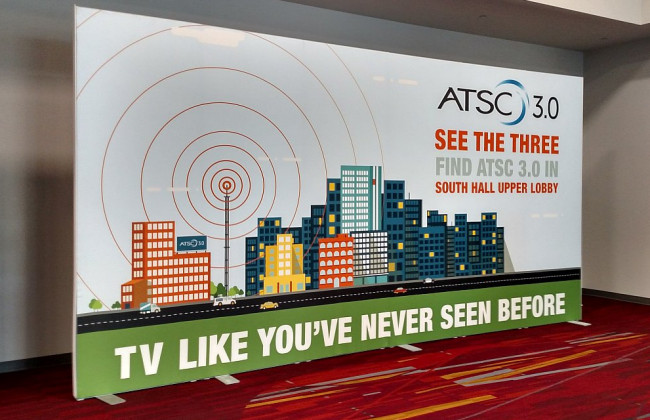A group of commercial broadcasters, non-commercial broadcasters and tech companies have asked the FCC to approve a voluntary, market-based rollout of a ‘Next Generation TV’ transmission standard, ATSC 3.0. The plea came in a joint petition filed by the Consumer Technology Association (CTA), National Association of Broadcasters (NAB), America’s Public Television Stations (APTS) and the Advanced Warning and Response Network (AWARN) Alliance.


Speaking at last week’s NAB Conference in Las Vegas, FCC Chairman Tom Wheeler says he plans to put the petition out for public comment by the end of April, and will put out the spectrum auction band plan and clearing targets by the end of the month as well. Those were the lead elements of an interview with Marci Burdick, NAB executive committee member and former TV board chair. The pledge on the ATSC petition drew audience applause and Burdick’s response was that was “great news.”
The petitioners have asked the Commission to approve certain rule changes to permit local simulcasting to enable ‘Next Generation TV’ to be deployed while ensuring that broadcasts in the current DTV standard remain available to viewers. The way this would be accomplished is as follows (A question about this was raised in a Display Daily by Matt – http://tinyurl.com/hezouz4).
Hosts Will Help
Each television broadcaster choosing to implement Next Generation TV will arrange to continue to broadcast in the legacy DTV standard so that viewers will not be disenfranchised. Under current FCC Rules, each television licensee must broadcast one free-to-air DTV signal in at least standard-definition quality. This requirement may be accomplished by stations deploying Next Generation TV by (a) broadcasting at least one free-to-air Next Generation TV signal and (b) arranging for the simulcast of that signal in the current DTV standard on another broadcast facility serving a substantially similar community of license.
Stations electing to deploy Next Generation TV will enter into market-by-market deployment plans that will rely on local simulcasting agreements to ensure the ongoing availability of programming in the current DTV format. Specifically, a temporary “host” broadcaster would agree to carry the programming of those stations broadcasting with the Next Generation TV format on its DTV subchannels. The “host” station’s programming would be carried reciprocally as a programming stream on one of the stations deploying the Next Generation TV standard.
Some critics have claimed that, due to the lack of a second broadcast channel to park the new digital signal, there will be a problem disenfranchising legacy viewers when broadcasters decide to pull the switch. The plan proposed by the petitioners solves this problem elegantly by employing a digital solution – allowing current broadcasters to share existing ATSC 1.0 facilities while deploying new ATSC 3.0 services on the channels vacated by the sharing broadcasters (the fact that ATSC 3.0 is not backward compatible can be likened to the situation that ATSC 1.0 was not backward compatible with NTSC, either). This is all the more viable due to the fact that the new standard allows for nearly four times the video payload, due to advances in video compression technology since ATSC 1.0 was deployed.
At the same time, despite assurances by some parties that a converter box will not be needed, there would be a reasonable market for converters to support those viewers wishing to watch the new 4K content on their existing 4K sets. In the long term, once the markets have fully transitioned, a call for a subsidized box at that time would not be unimaginable.
ATSC To be Finalized in 2016
On the current track, the ATSC 3.0 standard is on schedule to be finalized before the end of this year – not 2017, as some have predicted – so this transition has started, with manufacturers already showing Next Generation silicon. And the advantages of hybrid broadcasting – as enabled by ATSC 3.0 – make for a compelling set of features that will soon emerge.
The success of digital terrestrial broadcasting will be borne out by new business models that depend on IP delivery to the home – some of it over the air – and not by keeping an ageing transmission standard, or worse, mothballing an entire fleet of broadcast facilities. It remains up to the broadcasters (and the FCC) as to whether this plan will fly. – Aldo Cugnini
Aldo Cugnini is a video technology consultant and amateur musician. In addition to supporting various clients, he writes for a number of professional trade publications and dabbles in RC helicopters and ham radio.

